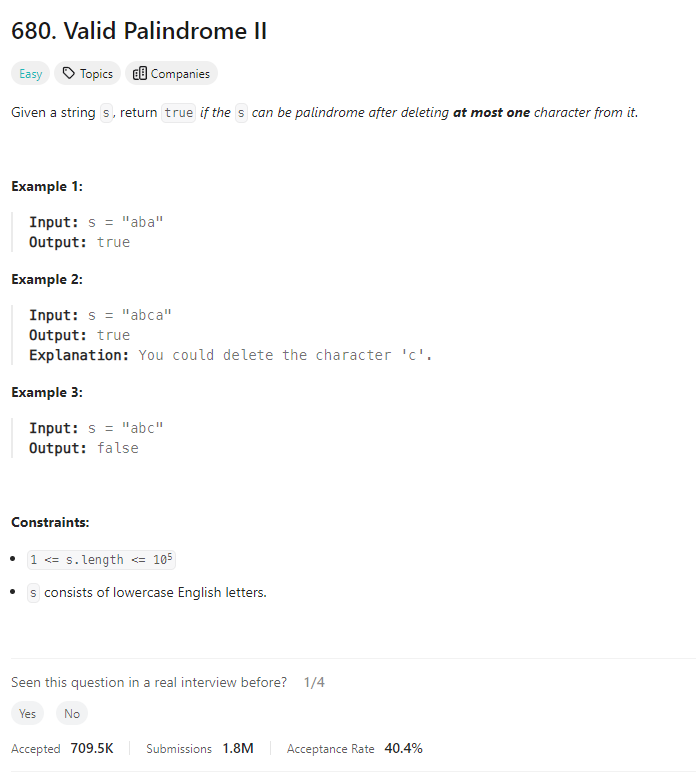Problem of The Day: Valid Palindrome II
Problem Statement
Brute Force - Recursion - Accepted
Intuition
My initial thought is to use a recursive approach to check whether it’s possible to make the given string a palindrome by removing at most K characters.
Approach
I approach the problem by defining a helper function that takes the left and right indices along with the remaining allowed removals (K). In each recursive call, I check if the characters at the current indices match. If they do, I proceed to the next pair of indices. If not, I have two choices: either remove a character from the left side or the right side, and I decrement the remaining allowed removals accordingly. The base cases handle scenarios where the indices cross each other or the allowed removals are exhausted.
Complexity
-
Time complexity: O(n^2), where n is the length of the input string. In the worst case, for each character mismatch, two recursive calls are made.
-
Space complexity: O(n), as the recursion depth can go up to the length of the input string.
Code
class Solution:
def validPalindrome(self, s: str) -> bool:
K = 1
left, right = 0, len(s) - 1
def helper(l, r, k):
if l > r:
return True
if k < 0:
return False
if s[l] == s[r] and k >= 0:
return helper(l + 1, r - 1, k)
else:
return helper(l + 1, r, k - 1) or helper(l, r - 1, k - 1)
return helper(left, right, K)
Editorial Solution
Approach: Two Pointers
class Solution:
def validPalindrome(self, s: str) -> bool:
def check_palindrome(s, i, j):
while i < j:
if s[i] != s[j]:
return False
i += 1
j -= 1
return True
i = 0
j = len(s) - 1
while i < j:
# Found a mismatched pair - try both deletions
if s[i] != s[j]:
return check_palindrome(s, i, j - 1) or check_palindrome(s, i + 1, j)
i += 1
j -= 1
return True
